underwater videographer course | equipment | scuba diving equipment for the underwater videographer
Scuba Diving Equipment for the Underwater Videographer
The underwater videographer has some special considerations when it comes to the choice of equipment, but much of the following advice applies all scuba divers.
Cylinder
Although steel is denser than aluminium, the walls of a steel tank can be thinner because of its higher strength, and so steel tanks tend to be lighter than aluminium of the same volume. For this reason I prefer steel tanks if they are available and I find they give improved trim and comfort underwater. However it is important to care properly for steel tanks because of the increased corrosion risk. In particular try not to totally drain them as water may enter.
If possible, use a DIN style pillar valve with a coarse screw thread which is more secure than an "A-clamp" yoke. This is particularly relevant in cave diving or wreck penetration where the valve is more likely to get knocked. However on many dive boats with rental tanks the DIN valve is not an option.
Regulator
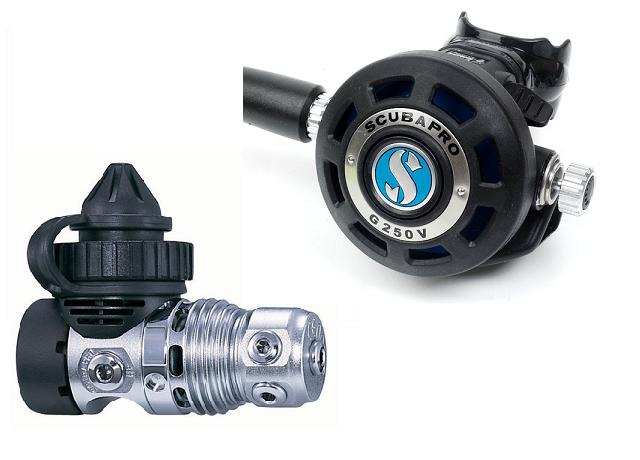 A good regulator that lets you breathe easily will allow you to concentrate on the task of shooting video. If possible get a regulator with a balanced first stage for minimal breathing resistance at all depths. I am a fan of Scubapro regulators which have given me great service. Their first stages in particular are excellent. I also like Aqualung and Apeks for their rugged engineering.
A good regulator that lets you breathe easily will allow you to concentrate on the task of shooting video. If possible get a regulator with a balanced first stage for minimal breathing resistance at all depths. I am a fan of Scubapro regulators which have given me great service. Their first stages in particular are excellent. I also like Aqualung and Apeks for their rugged engineering.
 In the Scubapro range I prefer the larger second stages to the newer, smaller second stages. An MK25 first stage with a G250V second stage is a classic combination that is hard to beat.
In the Scubapro range I prefer the larger second stages to the newer, smaller second stages. An MK25 first stage with a G250V second stage is a classic combination that is hard to beat.
If you are intending to dive in remote places then it's a good idea to go with a big brand so you have a reasonable chance of getting spare parts. This is where brands such as Scubapro, Aqualung and Mares win.
I used to use Poseidon Jetstream regulators for deep diving. Although they delivered air with very low resistance at depth, I found them to be less reliable than more conventional regulators and to require constant care to keep them working optimally.
Rebreathers are popular amongst underwater videographers and are covered on the rebreathers page in the technique section.
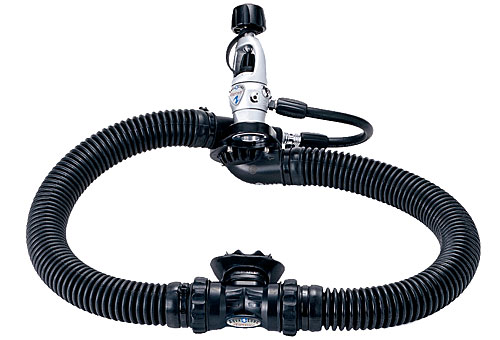 One interesting development for the underwater videographer was the introduction in 2005 of a twin hose regulator from Aqualung, the Mistral. This redesign of the classic vintage twinhose reg moves the exhaust bubbles to front of the first stage, behind the diver's head. This means the noisy bubbles are not only away from your face and ears, but also a foot or so further away from your subject. It brings some of the advantages of diving with rebreathers. If, for example, you're shooting macro video of skittish fish, you should be able to get a little closer to them without disturbing them. I am keen to try one in a macro situation such as the Lembeh Strait. However this reg is not for everyone. The work of breathing is higher, particularly in a head-down position. The reg freeflows more easily than other regulators, particularly if you're swimming on your back on the surface. And the mouthpiece can be uncomfortable, although this can be relieved by adding rebreather-style weights to the hoses, or a weight below the mouthpiece. There is an excellent discussion thread about the Aqualung Mistral on the Wetpixel forum.
One interesting development for the underwater videographer was the introduction in 2005 of a twin hose regulator from Aqualung, the Mistral. This redesign of the classic vintage twinhose reg moves the exhaust bubbles to front of the first stage, behind the diver's head. This means the noisy bubbles are not only away from your face and ears, but also a foot or so further away from your subject. It brings some of the advantages of diving with rebreathers. If, for example, you're shooting macro video of skittish fish, you should be able to get a little closer to them without disturbing them. I am keen to try one in a macro situation such as the Lembeh Strait. However this reg is not for everyone. The work of breathing is higher, particularly in a head-down position. The reg freeflows more easily than other regulators, particularly if you're swimming on your back on the surface. And the mouthpiece can be uncomfortable, although this can be relieved by adding rebreather-style weights to the hoses, or a weight below the mouthpiece. There is an excellent discussion thread about the Aqualung Mistral on the Wetpixel forum.
Buoyancy Compensator (BC)
 Since the growth of technical diving in the 1990s, "wings"-style BCs (buoyancy compensators) have become popular and taken a large share of the market from the more traditional "waistcoat" style BC or "stab jacket". Wings were orignially developed by Diverite to make diving with twinsets ("doubles") more comfortable, and if you are diving with a twinset they are perfect. However for single-tank diving I still much prefer a waistcoat style BC. I find that wings tend to hold me uncomfortably in a face-down position, whereas a waistcoat BC allows me much more mobility.
Since the growth of technical diving in the 1990s, "wings"-style BCs (buoyancy compensators) have become popular and taken a large share of the market from the more traditional "waistcoat" style BC or "stab jacket". Wings were orignially developed by Diverite to make diving with twinsets ("doubles") more comfortable, and if you are diving with a twinset they are perfect. However for single-tank diving I still much prefer a waistcoat style BC. I find that wings tend to hold me uncomfortably in a face-down position, whereas a waistcoat BC allows me much more mobility.
This really is a matter for personal preference, and is also related to how much weight you have to carry. Others much prefer the wings style, and they do allow for less clutter in front of you. There are now hybrid combinations of both styles.
My personal favourite are Seaquest BCs. My Sequest Pro QD+ has done years of good service. When it finally needs replacing I have my eye on the newer Sequest Pro QD with i3 technology. The traditional inflator hose, which I find sometimes catches on my housing, is gone. The dump valve, which I find sometimes catches on my primary hose, is now much lower profile. And the inflator and deflator are combined into a nice dual control.
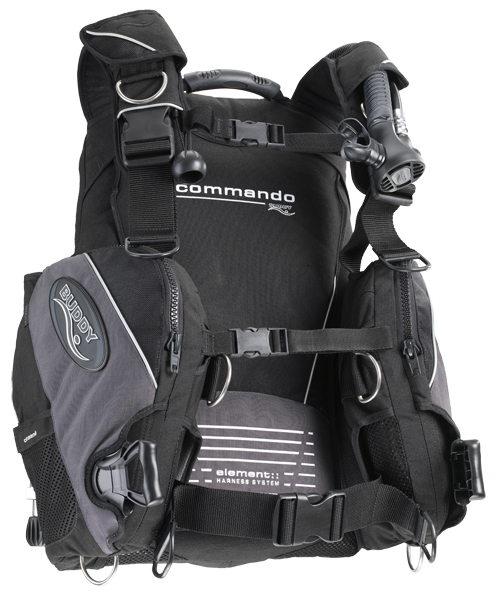 The British-made Buddy BCs were one of the early leaders in BC development. They have a reputation for solid build and reliability and are still worth a look, especially for UK-based divers.
The British-made Buddy BCs were one of the early leaders in BC development. They have a reputation for solid build and reliability and are still worth a look, especially for UK-based divers.
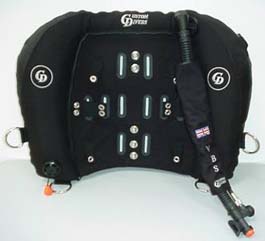 Custom Divers make fine wings-style BCs for those carrying double tanks or rebreathers. I used their wings to dive HMHS Britannic and other challenging wrecks and they performed perfectly.
Custom Divers make fine wings-style BCs for those carrying double tanks or rebreathers. I used their wings to dive HMHS Britannic and other challenging wrecks and they performed perfectly.
Mask
I have heard some videographers claim to prefer masks with a black silicone surround, as opposed to clear silicone, but I don't really know why this is. I prefer masks with a black surround simply because they disguise the black mould that inveitably takes hold.
I have tried masks with giant lenses and although these give a larger field of view I found these to be uncomfortable due to the increased buoyancy constantly lifting the mask up.
Side windows are also useful for catching sight of marine life that is in your peripheral vision, but these also tend to make the mask uncomfortably larger in volume.
I would advise against masks that have red tinted windows as these will scew your colour judgement when looking at your underwater monitor or eyepiece.
As I turned 40 I noticed that it was becoming more difficult to focus on my monitor due to presbyopia. If you have a rig that places the monitor fairly close to you, it can be a real problem judging whether your subject is in focus or not. I started a thread about this on Wetpixel which contains good advice on solutions, including laser surgery and corrective prescription lenses for your mask.
Fins / Boots
Freedivers claim that full-foot fins are more efficient, but I've heard others claim that open-heel fins are more efficient. Even in warm water I prefer to wear open-heel fins with wetsuit boots because the boots give protection to the ankles, and you have to be extremely lucky to find a pair of full-foot fins that don't ucomfortably rub your feet somewhere with extended use. I like Scubapro Delta boots.
 I have
I have 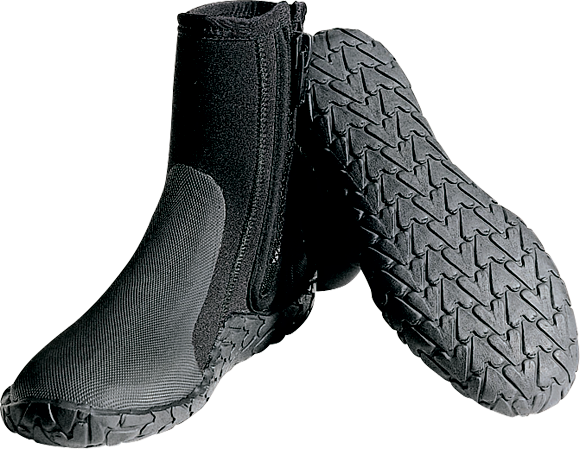 dived with Mares Plana Avanti X3 fins for many years and much prefer them underwater to any other fins I have tried. They are excellent for frog kicking, as well as regular finning. They are also great value. I also recommend the more expensive Avanti Quattro fins. The more recent Mares Excel fins seem to be a natural evolution but I haven't tried them.
dived with Mares Plana Avanti X3 fins for many years and much prefer them underwater to any other fins I have tried. They are excellent for frog kicking, as well as regular finning. They are also great value. I also recommend the more expensive Avanti Quattro fins. The more recent Mares Excel fins seem to be a natural evolution but I haven't tried them.
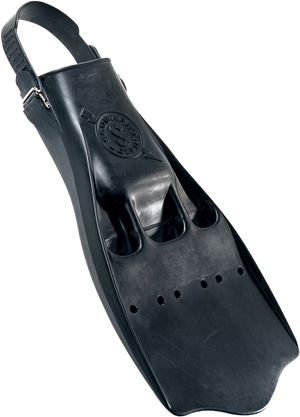 My Mares fins did not perform well on the surface when snorkelling. Snorkellers wearing Scubapro Jet fins were overtaking me with ease. These classic fins are still very popular, especially with commercial divers and technical divers. They are very dense, so can tend to keep the feet down if your feet tend to float up.
My Mares fins did not perform well on the surface when snorkelling. Snorkellers wearing Scubapro Jet fins were overtaking me with ease. These classic fins are still very popular, especially with commercial divers and technical divers. They are very dense, so can tend to keep the feet down if your feet tend to float up.
Split fins have gained hugely in popularity. Kicking resistance is less than with conventional fins and different style of finning is required. Apollo Bio-Fin Pro split-fins are well liked and are available in white and can be used for white-balancing your camera on. Some videographers may even prefer the pink ones for this purpose, as the result would be less red. Some Japanese fins are also available in pale colours but don't look very efficient to me. It's a shame that more manufacturers don't make fins in colours suitable for white-balancing.
Suit
In tropical waters I like to wear a full-length steamer style wetsuit. Even in warm water I prefer to wear a full-length neoprene suit rather than a shorty. In many shooting situations the lower legs can be vulnerable to sea urchins, stinging coral etc., no matter how careful you are not to touch anything. My regular suit for diving in tropical waters is a 5mm custom-fitted suit made by Hotwave Wetsuits of Phuket. They can make just about any style or design of suit you want. For slightly colder I add a 3mm hooded vest underneath, which greatly increases the warmth.
Diving in a wetsuit rather than a drysuit certainly makes life simpler and allows you to concentrate on shooting video. But there comes a point where you'll need a drysuit. In colder water I wear a custom-fitted O'Three drysuit which is extremely warm and comfortable. This UK-based company make great products and give great service.
Gloves
Gloves certainly make it more difficult to operate housing controls, and in tropical waters some dive operators even ban their use as they feel that divers witihout gloves tend to be more careful about what they hold onto. In colder waters use the thinnest gloves you can get away with, and if you have to wear thick gloves then consider cutting the ends off the thumb and one or two fingers to make operating the controls more easy. Grey gloves are a good idea for white balancing.
Reef Hook
On a site such as Blue Corner in Palau, where the current is usually strong and you don't need to move around much, reef hooks allow you hang effortlessly in the current and leave both hands free to concentrate on your video. There has been much debate about whether reef hooks are kind to the enviroment or not. In my view it's much better to hang off a reef hook in a strong current, with the hook giving a point contact on rock or dead coral, than to hold on clumsily with your hands or to risk crashing into coral. Just make sure you anchor to something strong that's not likely to break away bringing live growth with it. You can buy ready-made reef hooks such as this one from Fish 'n Fins, or you can make one out of a stainless steel hook, rope or preferably 1-inch webbing, and a stainless steel bolt snap available from dive shops or ship's chandlers.
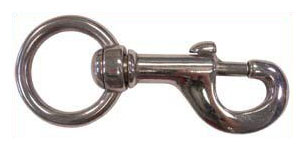
Dive Computer
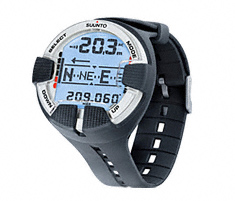
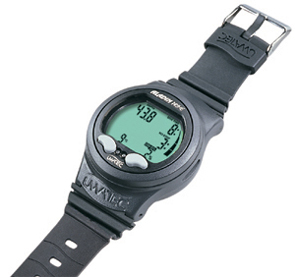 The two leaders in dive computers are Uwatec (Aladin), and Suunto. I recommend choosing one of these two brands. Personally I like to dive with a wrist-mounted computer rather than one in console. I just find it easier to refer to quickly.
The two leaders in dive computers are Uwatec (Aladin), and Suunto. I recommend choosing one of these two brands. Personally I like to dive with a wrist-mounted computer rather than one in console. I just find it easier to refer to quickly.
I still usually dive with a pretty simple Aladin Pro dive computer that has given years of great service. However the Suunto computers show you the "floor", the deepest depth at which decompression time will not increase. In other words they indicate at any depth whether your ascent time is getting longer or shorter. The Aladdins don't give you this information, but it's really useful in certain situations. For example on a repeat 40-metre dive at Burma's Black Rock, where I might have significant decompression stops to do, but I encounter something interesting at 15 metres during the ascent. I want to know if my situation is getting better or worse if I stop. So for a while I dived with a Suunto Gekko. It was fine for single-day diving, but on repeat diving in a liveaboard situation it was giving me a whole 8 minutes longer than the Aladin, plus the discretionary 3-minute safety stop. I found this excessively conservative. I'm still trying to establish if the newer Suunto dive computers are equally conservative. It's a real shame that the Uwatec computers don't show the "floor".
BIG PIC OF ME WITH ALL MY GEAR
< back to lanyards | scuba diving equipment for the underwater videographer| forward to avoiding disaster >
